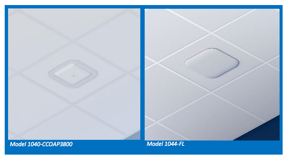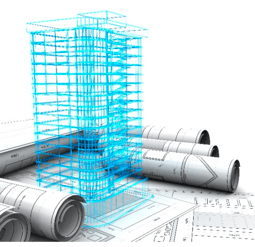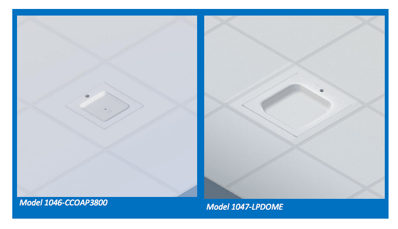 In most venues, the ideal place to mount WiFi and DAS access points and antennas is in the ceiling, both to achieve the best wireless signal coverage and to conceal cabling above the ceiling. However, there is great variety in the shapes, sizes and weights of antennas and APs. Additionally, there are many different interconnect requirements and ceiling constructions and materials.
In most venues, the ideal place to mount WiFi and DAS access points and antennas is in the ceiling, both to achieve the best wireless signal coverage and to conceal cabling above the ceiling. However, there is great variety in the shapes, sizes and weights of antennas and APs. Additionally, there are many different interconnect requirements and ceiling constructions and materials.
 An aesthetic installation is paramount, as the ceiling location is a very visible from all points of view. In many cases, installation aesthetics are subject to approval of architects, building owners or aesthetics committees. Often, access points are clipped to a suspended ceiling grid, but clipping to the ceiling grid may be unacceptable from an aesthetics or security standpoint. Installers may be tempted to place access points above the ceiling, but leading access point vendors recommend not installing above the ceiling for wireless performance reasons and for maintainability.
An aesthetic installation is paramount, as the ceiling location is a very visible from all points of view. In many cases, installation aesthetics are subject to approval of architects, building owners or aesthetics committees. Often, access points are clipped to a suspended ceiling grid, but clipping to the ceiling grid may be unacceptable from an aesthetics or security standpoint. Installers may be tempted to place access points above the ceiling, but leading access point vendors recommend not installing above the ceiling for wireless performance reasons and for maintainability.
 Oberon offers solutions to help you answer the following questions when planning your next wireless project:
Oberon offers solutions to help you answer the following questions when planning your next wireless project:
- Is the access point mounted in the location specified by the wireless design?
- Moving the AP even a few feet (just to find a convenient mounting location) may impact the overall wireless performance.
- Is the access point oriented properly?
- Flush to the ceiling, and not above, is preferred. The access point should be mounted in the horizontal orientation for best wireless coverage.
- Is the access point suitably physically secured for the venue?
- In some locations, locking the AP is required.
- Is the installation professionally aesthetic for the venue?
- In many venues, the appearance of the installation is subject to approval.
- Is the installation "code compliant?"
- National Electric Code, burn rated ceiling, seismic and Infection Control codes and procedures may apply, depending on the venue.
- Does the installation provide for service and frequent technology migrations?
- WiFi access points are often upgraded every 3 to 5 years.
- Does the installation provide for standards compliant cabling and termination?
- Does the installation also protect the cabling?
Oberon offers the widest variety of AP and antenna mounting solutions, providing the ideal combination of wireless performance, ease of installation and maintenance, as well as installed aesthetics. Oberon has taken cues from recessed lighting products, creating mounting solutions for many types of ceiling constructions.


.png?width=58&height=58&name=X_logo_2023_(white).png)
